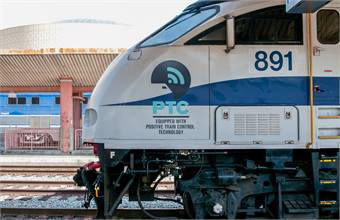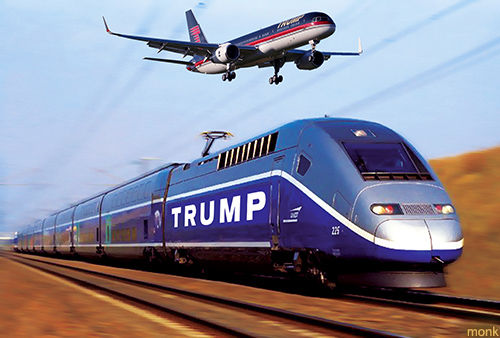Political fantasy versus stark reality
- by Charles A. Turek
- Jun 7, 2016
- 4 min read
Today, I’d like to discuss three pieces of political fantasy. Each affects railroads, and each is faced squarely by stark reality. We tend to see one side through the smoke and mirrors, and the other with our natural, human tendency to reject unpleasant realities.

Political fantasy #1: Restricting the flow of crude oil to refineries or export ports by blocking pipelines will reduce dependence on fossil fuel thereby reducing carbon emissions and accidents involving oil. (This should be called pipeline v. oil train.)
Reality: Beyond a tyrannical move, unlikely in America, where the government prohibits any oil production, oil will continue to flow when and where it will turn a profit. Both pipelines and crude oil trains will have accidents, so it’s a silly and unproductive political fantasy to refuse to permit new pipelines. Forbes did a great article in April 2014 where it was expounded that pipeline, boat, truck and rail were about equal insofar as safety, and they changed order of badness depending on whether your focus was accidents per unit, life safety, spills, environmental damage, etc. Crude oil trains tend to operate near rivers, because that’s where the railroads were built to get the best possible grades. Pipelines tend to cross rivers. Rail goes through the center of towns, and pipelines do, too. Trucks may or may not skirt a town depending on how the freeway was built. Boats are always on the water and go through older towns because waterways historically preceded rail and highways as transportation corridors. Moral of the story: Always keep those oil booms, vacuums and a few cases of Dawn handy!
Political fantasy #2: Positive train control (PTC) is a technological marvel that will prevent virtually every railroad accident imaginable.

Reality: I’ve railed about PTC before, so you can skip this paragraph if you think you’ve heard it. PTC, far from a technological marvel, is really still in development. It will be in development and testing until every mile of track in America is using some kind of system and we know how everything will work together. On the other hand, PTC is a marvel of political theater that lets Congress step in and look like it is doing something every time there is a railroad accident involving loss of life. It has also allowed Congress to look magnanimous when it granted the railroads’ demand to extend the already Congressionally arbitrary deadline. (Is there any outfit more arbitrary?) In truth, the deadline means little. Testing will go on long after any deadline. Like so much other technology, new developments will outpace projects like PTC, so it’s just as likely that any PTC system will be outdated on the first day of full implementation. Some wags have said that PTC would allow Congress to control all the trains and the passengers on them, or become a giant artificial intelligence like Skynet from the Terminator movies or Samaritan in CBS’s Person of Interest, but I don’t think Congress is or was smart enough for that. Congress will only mandate something if there’s always the possibility of un-mandating it when votes are lost.
Political fantasy #3: A President Donald Trump will be good for passenger rail.

Reality: Look through all the position papers and speeches you can locate on Mr. Trump, and you will not find his position on Amtrak, passenger rail in general, or railroads even more generally. The best we can do is look back on his comments about American infrastructure and the need to put money into it. Hope that means passenger rail and high-speed rail, but don’t hold your breath! Those who believe in Mr. Trump can’t refute he may just as likely seek to dump Amtrak into private hands as to increase its funding. The Trump Train is or was a sales gimmick, not a loving embrace of railroads. On the other hand, railroading is big business, and Mr. Trump certainly understands that aspect of American life. He may be just the thing to whip Congress into shape on Amtrak, or to make sure Amtrak does not survive another administration in its current format.
I’d like to see a push for Amtrak board members to come from the executive suites of railroads, short line associations, commuter systems, and other interested transportation businesses. Better than political hacks. Let the board then appoint a CEO and make the CEO tell Congress what is needed, not the other way around.
But now I’m getting off into railroad fantasy #266. Stark reality is very, very different.
©2016 – C. A. Turek – mistertrains@gmail.com
(Charles A. Turek is a writer and novelist based in Albuquerque, NM. After four decades working in areas of the insurance industry related to transportation, he now writes on all aspects of American railroading. Charles is a political conservative but believes in public funding of passenger rail as a part of the federal government’s constitutionally conservative obligation to provide for defense and public infrastructure so that private enterprise may flourish.)

![maxresdefault[1].jpg](https://static.wixstatic.com/media/cef8ab_8d4e0ddce355463e8edabd7c8937b6f6~mv2_d_2500_1406_s_2.jpg/v1/fill/w_124,h_70,al_c,q_80,usm_0.66_1.00_0.01,enc_avif,quality_auto/maxresdefault%5B1%5D.jpg)



















Comments